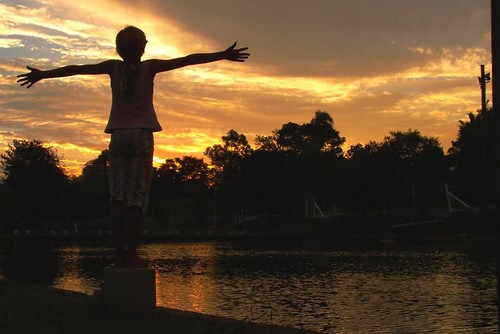Expand your child’s world
The gift of home education is that you get to shape your child’s exposure to the world.
The danger of home education is that you get to shape your child’s exposure to the world.
Our opportunity and obligation as parents is to create children with the capacity for caring. The caring they grow in their spirits comes through encounter, not explanation. It’s one thing to read about the elderly, it’s another to visit a nursing home, it’s another still to befriend an older person and make a commitment to knowing that person.
Within our homes, our habits of behavior and thought, our values and worldview, our biases and beliefs are as invisible to us as the air we all share. One of the benefits of homeschooling is that we live those lifestyles and beliefs unfettered, without anyone looking over our shoulders telling us we are right or wrong.
The flip side, though, is sometimes missed by us. That sheltered space can create a windowless view of the world. We read about other cultures warmly, fondly, with interest. But do we know them? Can we? We read about injustices from another century, but are we actively exposed to the current communities of protest in our own backyards (whether or not we agree with them)?
I remember when my kids were small, Jon and I took them to Little Saigon in Orange County (Los Angeles). We had been studying Asia in homeschool. Our first stop was in a bakery. Everyone spoke Vietnamese. We did not. The shopkeeper recognized us as outsiders and gave my kids free pastries. Free pastries…for four kids (at the time). I have never been to a shop before or since where that happened.
We walked down the strip mall, noticing ads in characters I couldn’t read, rice cookers in shop windows. We entered a small art gallery where paintings of willow-lined dirt paths featured lovely women in pink gowns and sun umbrellas. I realized I didn’t know Vietnam was beautiful. I had only ever seen images from the war.
I asked the owner of the shop how he came to America. He told my kids, Jon, and me: “My family and I fled Vietnam by boat. The little ones. I sent my family ahead. Their boat didn’t make it. They all drowned. Pirates. I followed safely behind, and didn’t know what happened to them until I arrived in America.”
I was staggered. My kids were young. This was nothing like reading about the Vietnam war.
Years later in Ohio, we met a Russian who was carrying groceries home in 20 degree weather. Jon gave him a ride. We invited him to Thanksgiving. We learned the story of his family he hadn’t seen in five years while he sent money home from his dishwashing job. When kind friends gave us a new van (we were “poor” in our world), my kids asked us if we could give our old van to our Russian friend. We did.
After 9/11, Jon brought donuts to the local mosque to say: “We know you are about to go through a lot because of people unlike you, who look like you and share your religion.”
Homeschoolers are good at studying history, noting past injustices, reaching out across the ink and pages to other worlds beyond their own. This foundation creates the right context for the next step: encounter. You know you are having an encounter when you are rendered a little speechless, a lot uncomfortable, and you find yourself revising your assumptions.
We have the perfect opportunity to do this with/for our children (and naturally, for ourselves). But it’s a little unnerving to do it. Very easy not to.
As adults, we can begin by admitting that there’s a lot we don’t know. Standing in the shoes of the other (or even just getting near the shoes of the other, in physical proximity to the other) is the foundation for empathy, good public policy, and healthy spirituality. This objective ought to be the context for the Common Core Standards of education, if you ask me.
I hope you’ll find ways to get out of your community and into one that is risky and new to you. From where I sit, I can’t see any downsides to that curriculum.
Cross-posted on facebook.


















